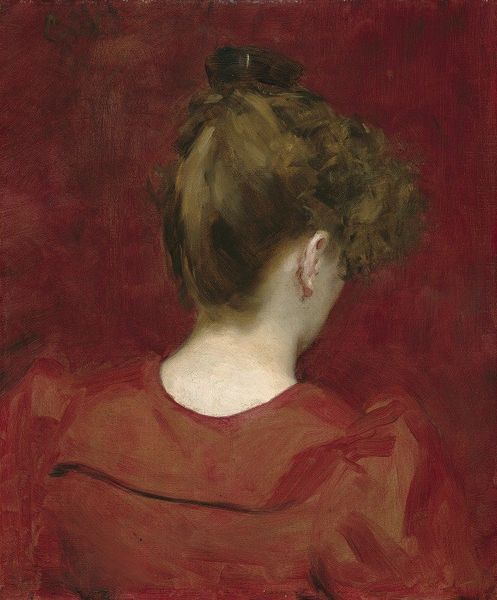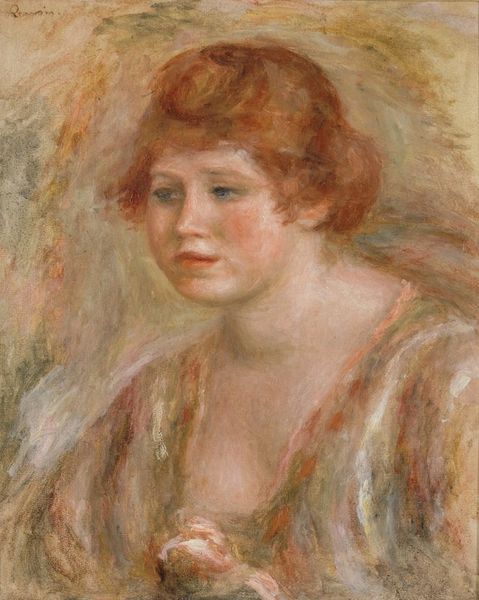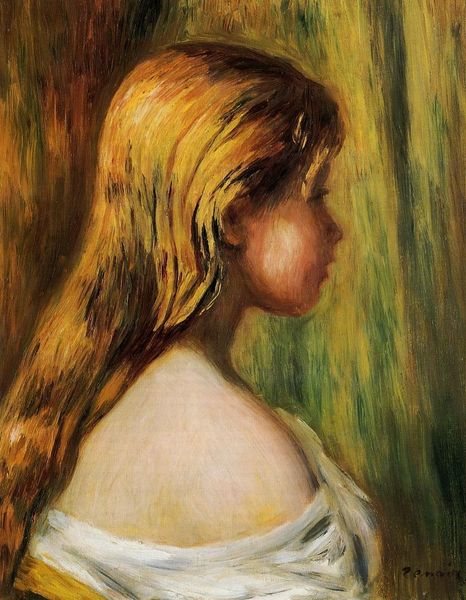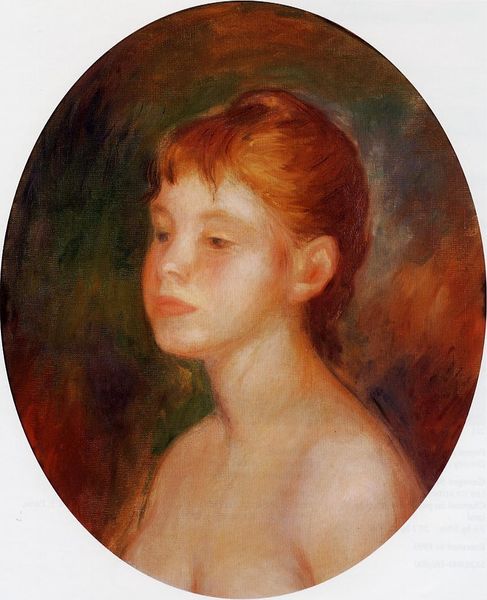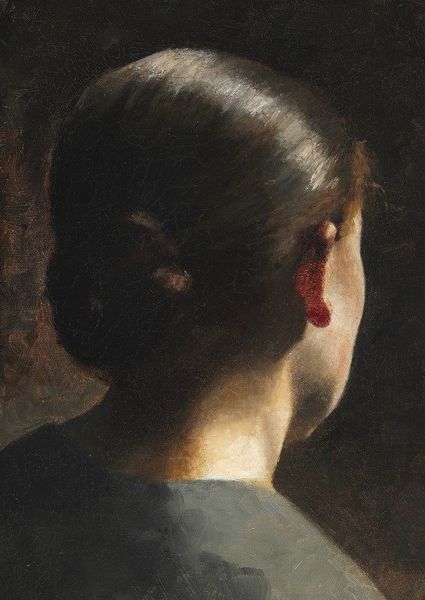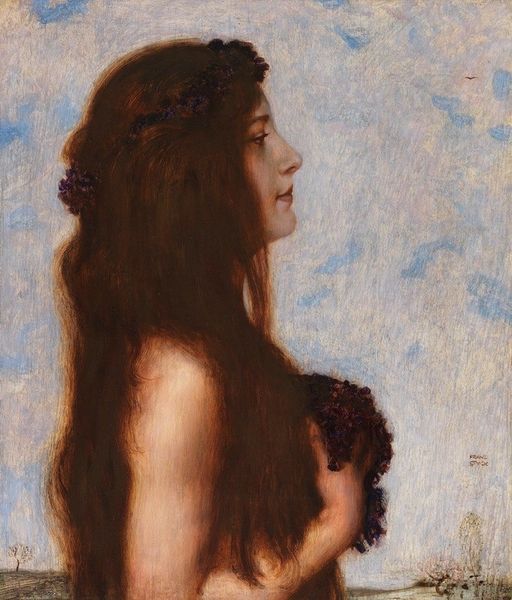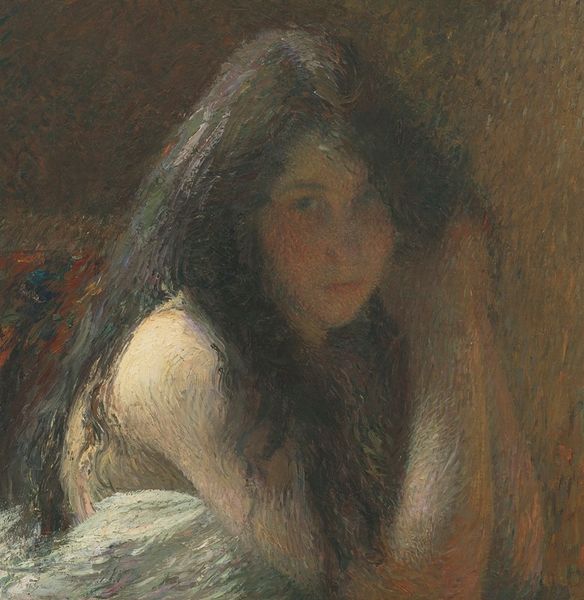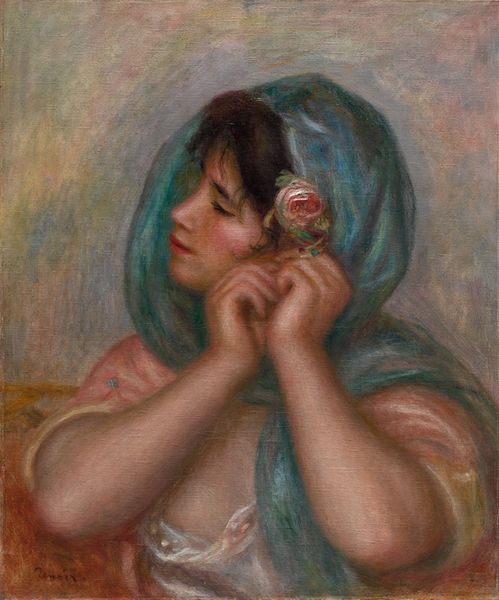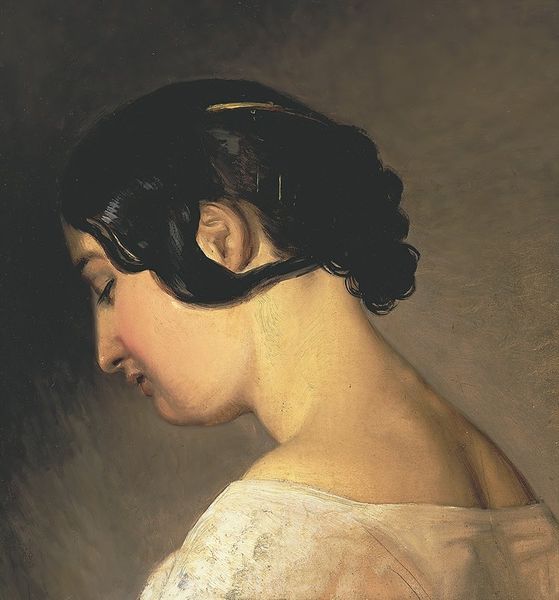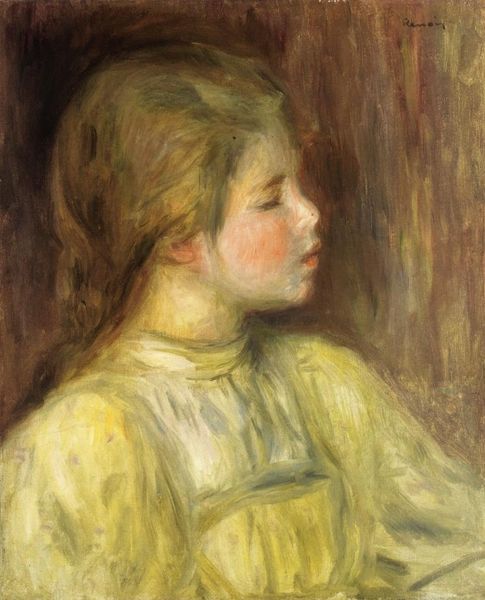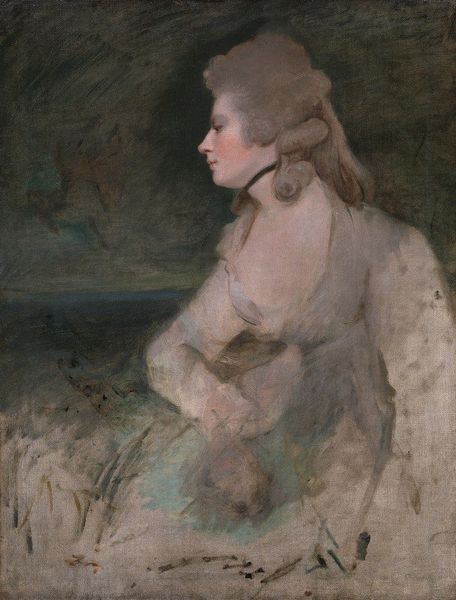
Copyright: Public Domain: Artvee
Editor: This is "Head of a Young Girl," an oil painting by Pierre-Auguste Renoir from around 1890. I'm struck by the overall softness and the pastel hues, which create a really serene feeling. How do you interpret the imagery in this piece? Curator: The floral backdrop, those diffuse roses, certainly contribute to the sense of idealized beauty typical of the era. But notice also the girl's profile. It's rendered with a classical purity. Consider how Renoir positions her: in profile, a common pose in ancient Roman portraiture to depict leaders and individuals of significance. Does this evoke a feeling about her potential? Editor: That’s interesting, I hadn't thought of the classical connection. But isn’t that romanticizing her a bit too much? I mean, she’s just a young girl. Curator: Precisely. The visual symbols and cues tell us something about the artist's aspirations. The roses aren’t just pretty, decorative elements. Historically, they're linked with Venus, beauty, and a youthful glow. The painting hints at not just her present appearance but perhaps at her burgeoning womanhood. So, Renoir projects cultural ideals of beauty onto her, doesn’t he? Editor: I see what you mean. The cultural baggage of roses! The Roman profile! It is more than a simple portrait. It’s loaded with implied meanings about femininity and societal expectations. Curator: Indeed! And Renoir’s choice of rendering her form softly enhances those cultural impressions, as the figure blends into the environment in its composition. Editor: This has given me a fresh understanding of how Renoir employed familiar images to embed deeper cultural ideas into an image. Curator: A portrait can be so much more than just a face, it can reflect deeply ingrained symbols and shared cultural values.
Comments
No comments
Be the first to comment and join the conversation on the ultimate creative platform.
